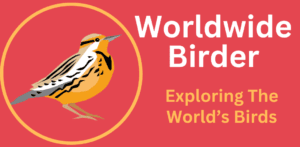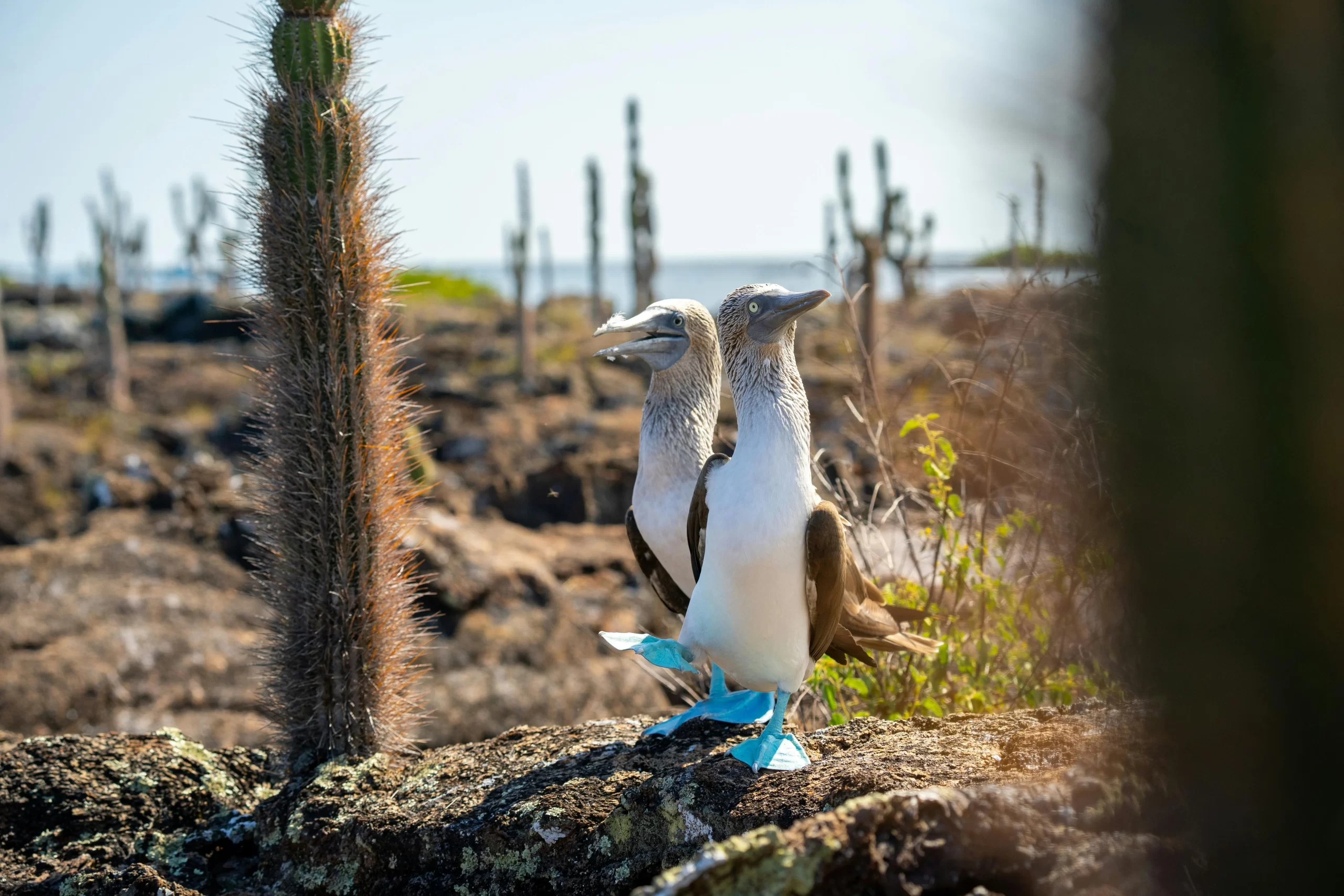With about 11,000 birds in existence, there are bound to be some birds with funny names. Indeed, ornithologists did not disappoint, as dozens of birds have been given humorous names. Some bird names go beyond humor, being just plain strange. However, this list will focus on funny bird names.
I’ve compiled a list below of the best of the best regarding funny bird names. I’ll explain how each species was given its iconic name and reveal some interesting facts about these unique birds. Read on if you’re ready for a chuckle.
Table of Contents
The Definitive List of Funny Bird Names
American Woodcock
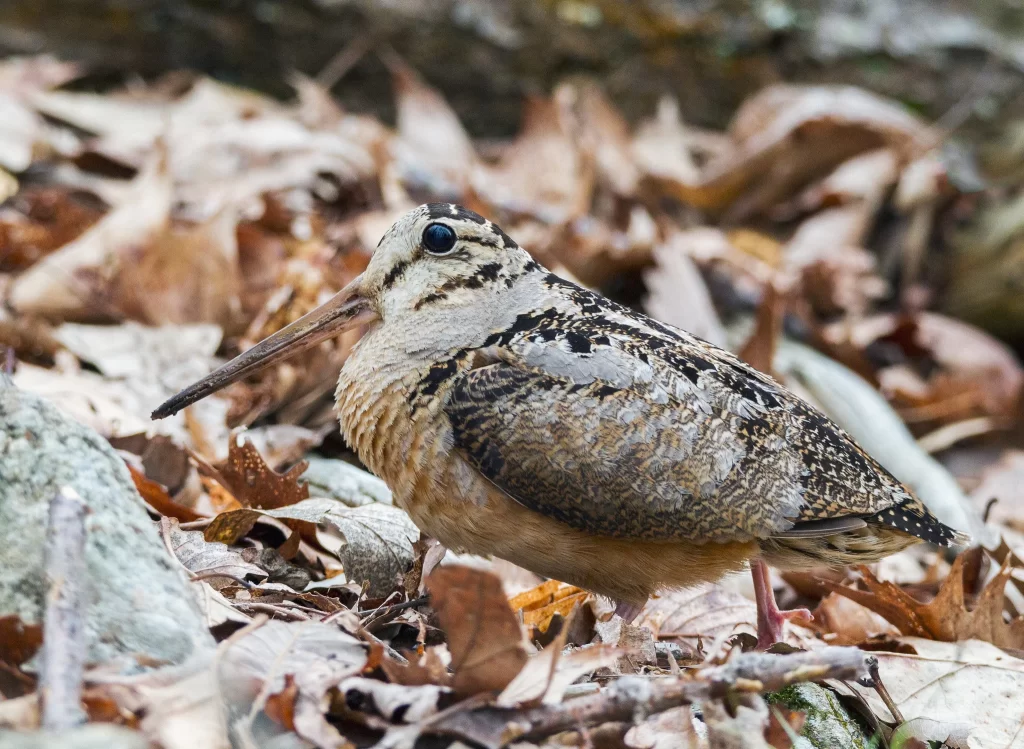
Leading off this list is a chunky shorebird native to areas of the United States and Canada east of the Great Plains. While their name is included on any good list of funny bird names, it is rather appropriate for this species. You see, despite being shorebirds, American Woodcocks frequent young forests or open woodlands. Here, they probe into the earth with their long bills and try to capture earthworms.
These birds with funny names are more dependent on woodland habitat than any other North American shorebird. Although their populations have declined in the last few decades, they are not in any immediate danger. Many states have implemented woodcock conservation plans due to the substantial popularity of this bird.
Andean Cock-of-the-rock
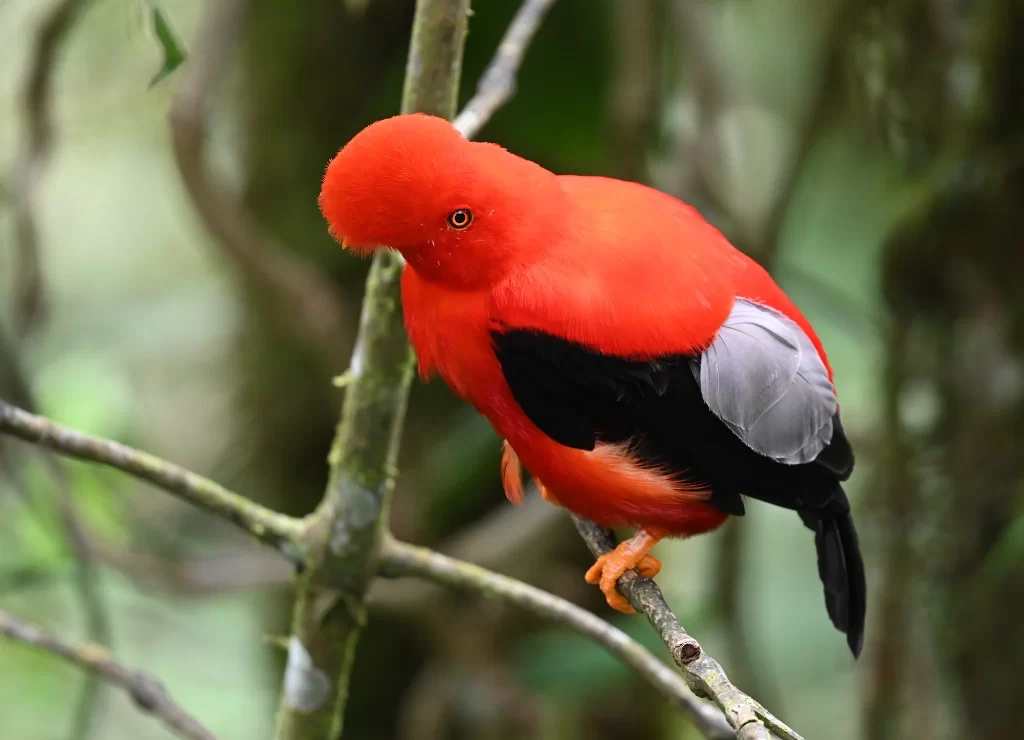
Image attribution: “Andean Cock-of-the-rock” by Andy Reago & Chrissy McClarren is licensed under CC BY 2.0
The Andean Cock-of-the-rock is one of the best bird names in the world. Not only is it funny and inappropriate, but the name just rolls off the tongue. Many would expect this species to be a derpy-looking bird, but in reality, Andean Cock-of-the-rocks are one of the most stunning birds in South America.
Males are a deep red or orange color with turquoise feathers on their backs. The breeding displays performed by these funny birds are humorous yet captivating to observe. Breeding entails males congregating at display sites where they compete in dance competitions with one another. Andean Cock-of-the-rocks are the national bird of Peru.
Bananaquit
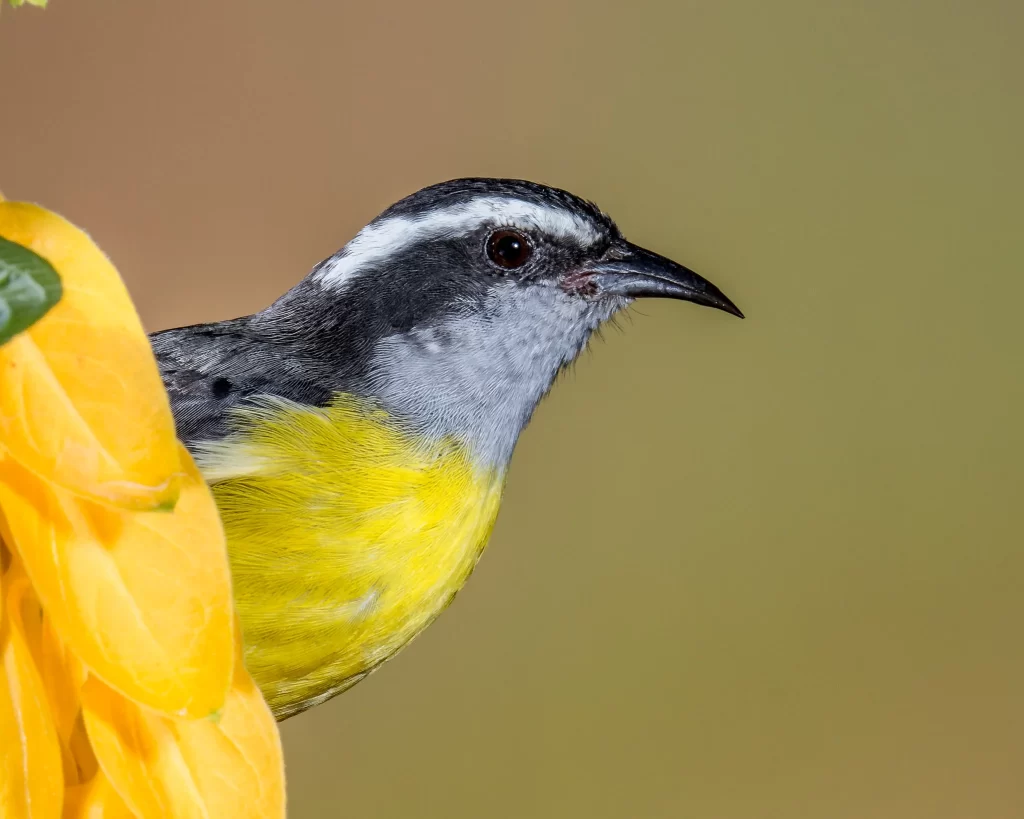
Image attribution: “Bananaquit” by Andrew Morffew is licensed under CC BY 2.0
If you’re curious about weird bird names, look no further than the Bananaquit – an unusual species in a genus of its own. Bananaquits are one of the most variable bird species in the world, with at least 41 subspecies presently being recognized. Some of these subspecies may earn their own species status in the future, but for now, the Bananaquit remains one of the most diverse birds that can be found.
Bananaquits do not eat bananas, but they do love sugar. They’ll commonly visit gardens and sip from hummingbird feeders. Otherwise, they may frequent flowers in a yard and lap up nectar. Unlike most birds, these birds with funny names have adapted well to areas that have experienced human disturbance.
Blue-footed Booby
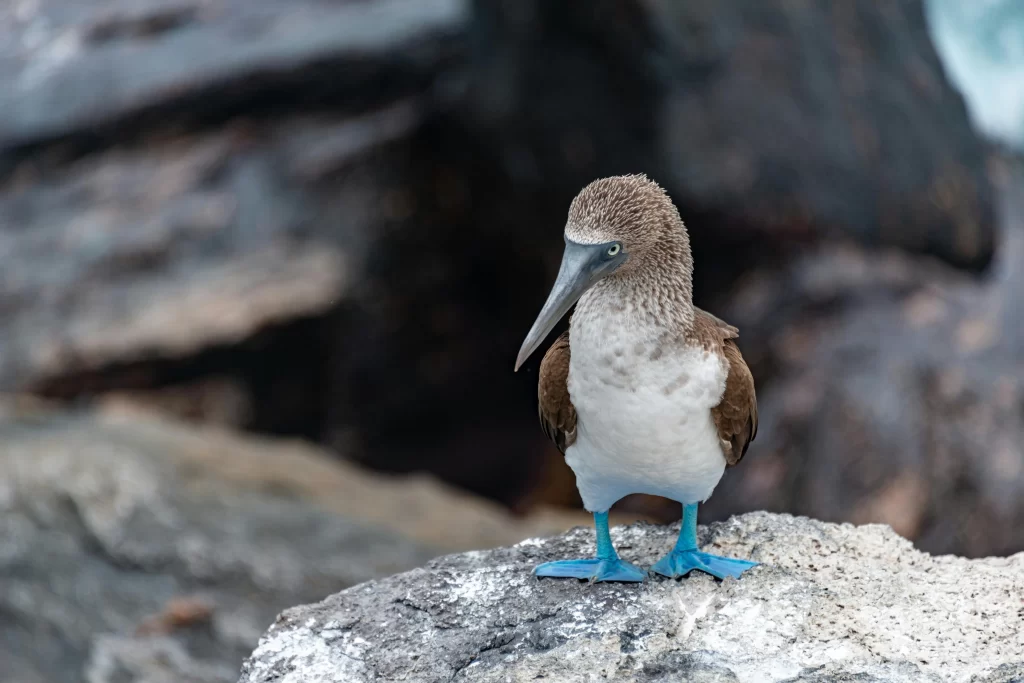
The Blue-footed Booby has one of those funny bird names that is recognized by many non-birders. Although the name may sound a tad naughty, it is actually quite appropriate for this species. You see, these birds with funny names do–indeed–have blue feet. Moreover, they belong to the booby family – a group of 10 diving seabirds that are formidable fish predators.
However, boobies look quite awkward on land, and they display odd courtship behaviors. Thus, they were given the unflattering name “boobies”. Blue-footed Booby populations are stable for now, and they breed on remote offshore islands in sizable colonies.
Dickcissel
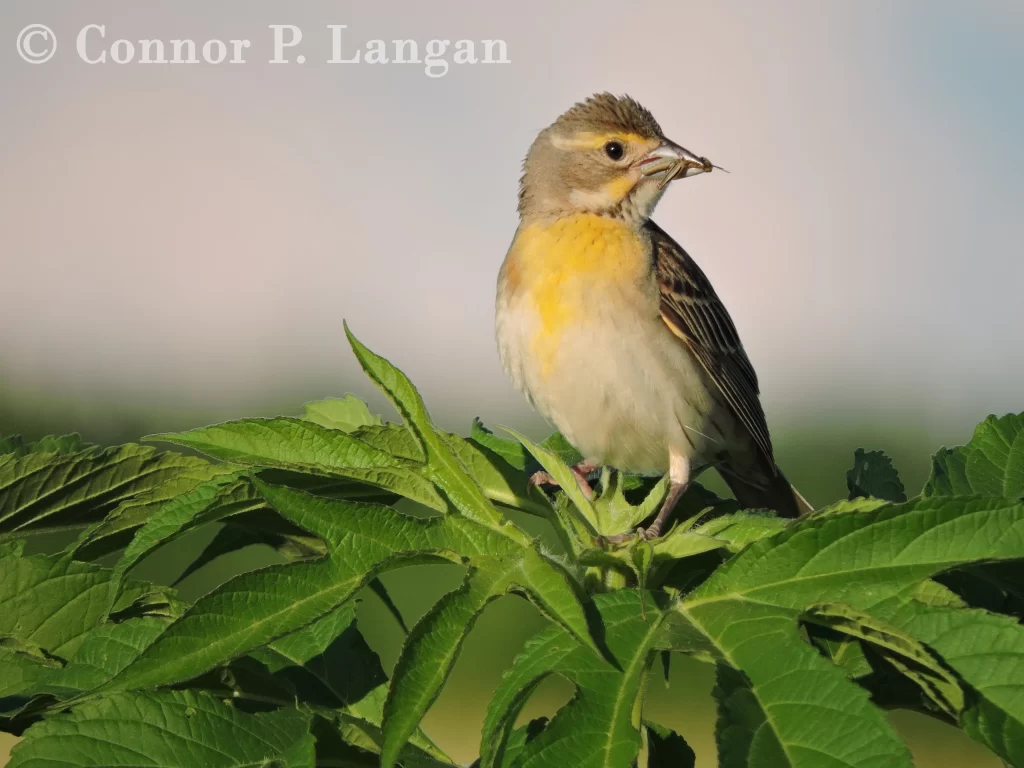
Dickcissels are well-known songbirds of prairies within the United States. Without any context, it would seem that Dickcissels have a very random name. However, those who have heard the song of this species know that the name is appropriate: “Dick-dick-cissel-cissel”.
Dickcissel populations have suffered due to the clearing of most of the historic prairies within Midwestern states. Although they’ve lost considerable numbers, it appears that they experienced a slight uptick in numbers in the past few years.
Erect-crested Penguin
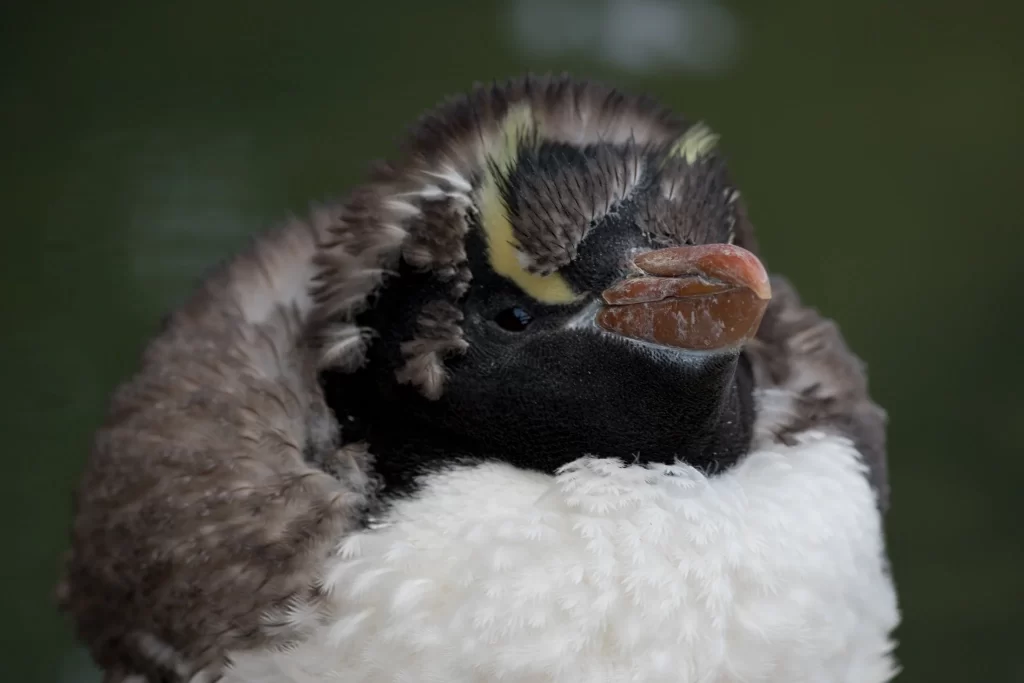
Image attribution: “Erect-crested Penguin” by Kimberley Collins is licensed under CC BY 2.0
Erect-crested Penguins have two spiky yellow tufts of feathers that stick up on either side of their head. Although their name is one of those funny bird names that people love to tease, the description suits them well. These medium-sized penguins are among the most uncommonly observed penguins in the world. This is not necessarily because of their population size (around 200,000 individuals), but because they breed on such remote islands south of New Zealand.
Although substantial numbers of these penguins still exist, they have declined markedly in the last half-century, leading to them being listed as endangered. Moreover, Erect-crested Penguin colonies have disappeared from some of their historic breeding locations, now breeding on only two islands.
Gang-gang Cockatoo
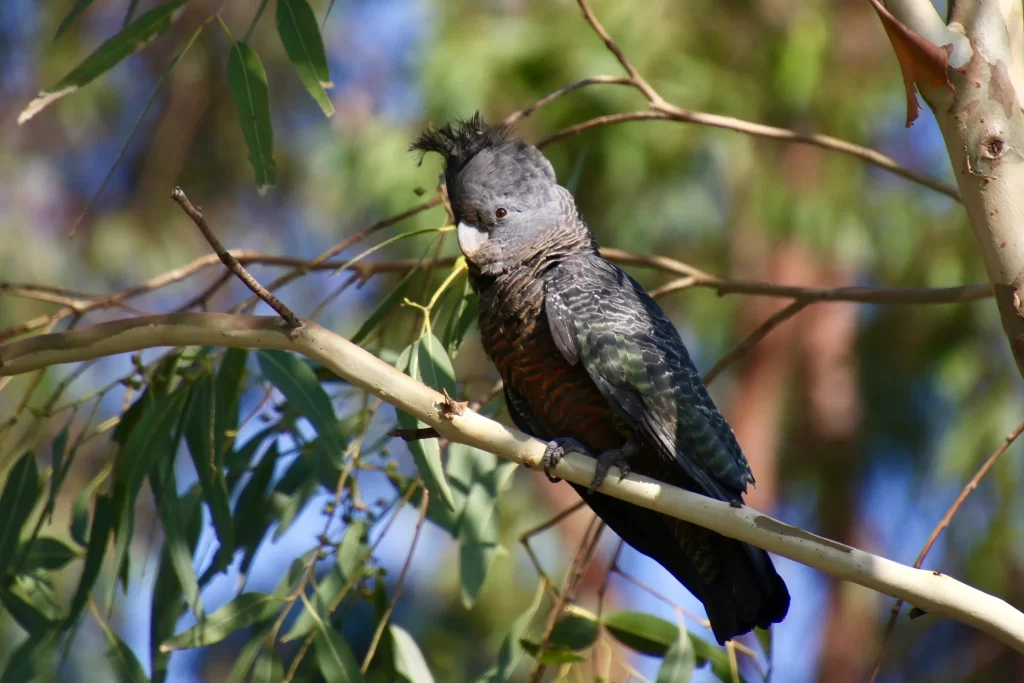
Gang-gang Cockatoos have an amusing name that suggests that they are hip-hop aficionados. In reality, the name is thought to be derived from the Aboriginal language. Gang-gang Cockatoos are unique to their genus. Both sexes have gray bodies, but males have red faces.
These cockatoos breed in mountainous forests in large trees. This makes them difficult for ornithologists to study, but it also protects them from poachers. Precise numbers about the population of Gang-gang Cockatoos are not available, but they are currently regarded as vulnerable, as their habitats are susceptible to disturbance from logging.
Great Tit
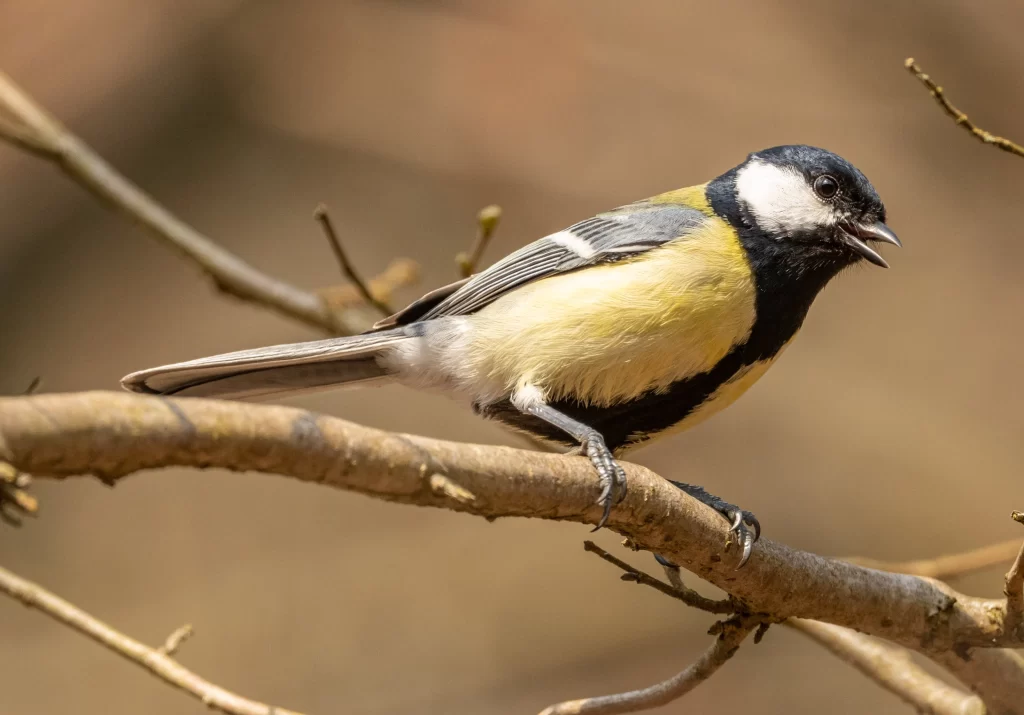
The Great Tit has–unquestionably–one of the best bird names of any species. Although there are a variety of different tit birds, none of the others have funny bird names quite like the Great Tit.
Great Tits are small songbirds that are found throughout Europe and much of the Middle East and Asia. They are familiar are bird feeders and among the most common birds around human settlements. Indeed, they regularly nest in birdhouses, and they are considered to be among the best-studied birds in the world.
Hardhead
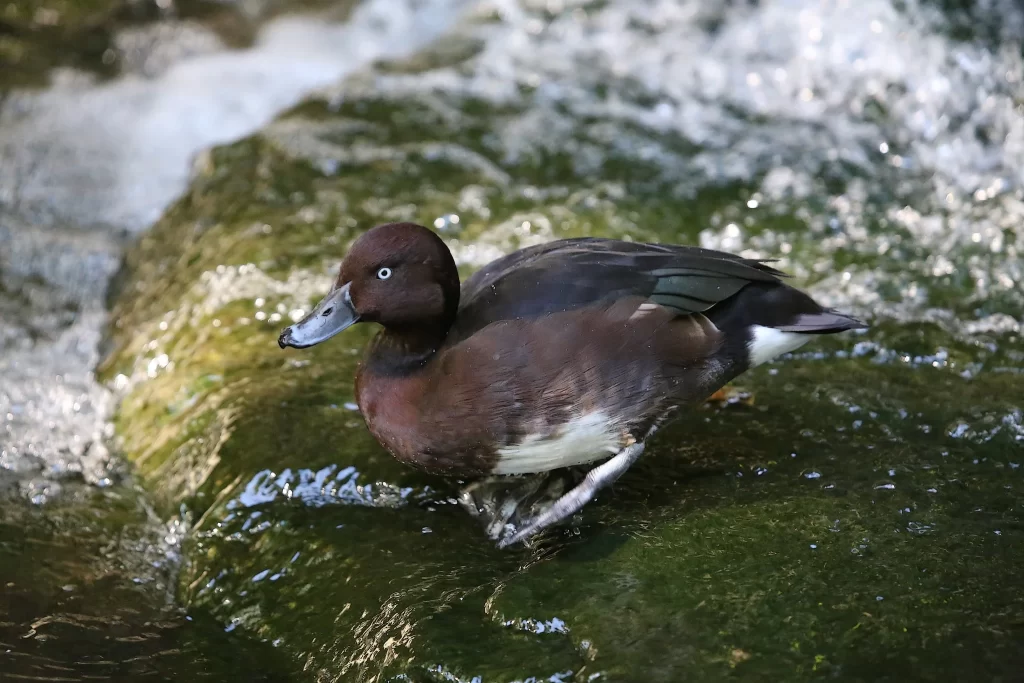
Image attribution: “WHITE-EYED DUCK” by cuatrok77 is licensed under CC BY-SA 2.0
A Hardhead is another one of those weird bird names that makes you stop and consider how funny bird names like this one came to be. Well, contrary to what you may think, this duck’s name does not relate to its skull density. Rather, the name came to be because the bird’s head was notoriously difficult for taxidermists to preserve when the initial specimens were analyzed.
Hardheads are the only diving ducks found in Australia. They feed almost exclusively on underwater vegetation in marshes and lakes, and their populations are now stable after initially declining during the intensification of agriculture in Australia.
Horned Screamer
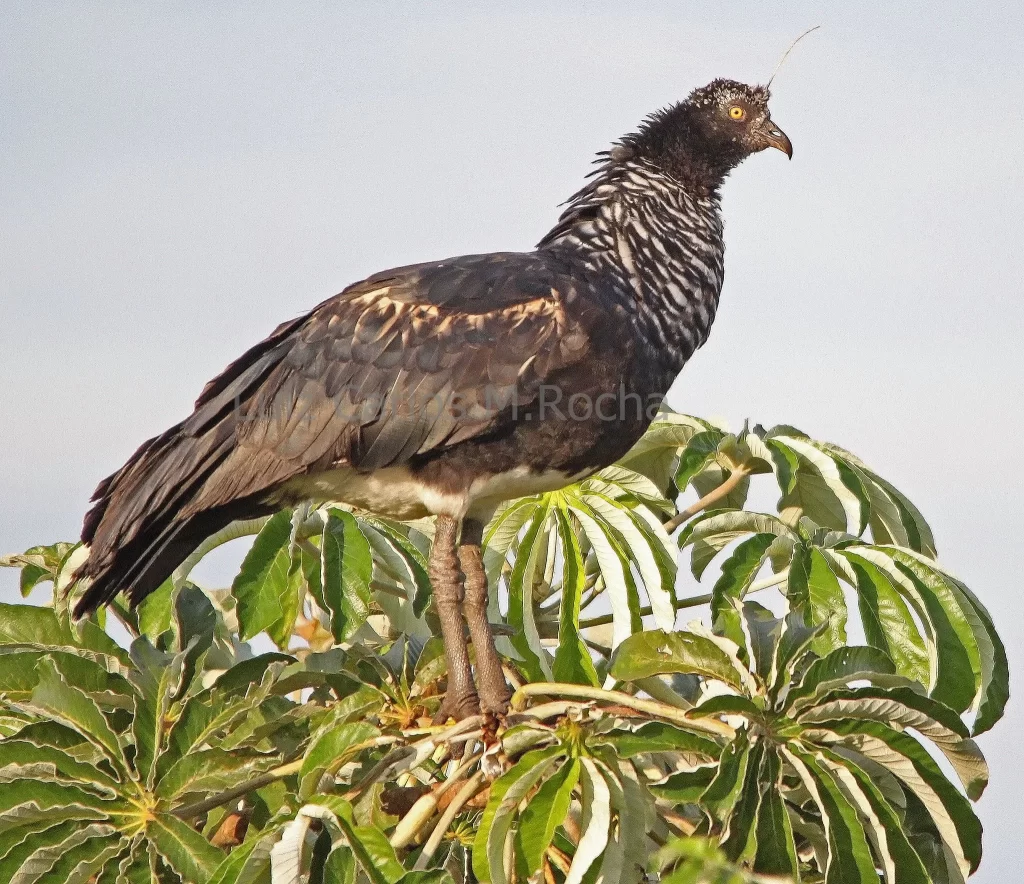
Image attribution: “Anhuma – Anhima cornuta” by Luis Carlos Rocha is licensed under CC BY-SA 2.0
Horned Screamers are one of three screamer species – a group of birds related to ducks and geese. They don’t tend to make screaming sounds, instead, they produce a variety of strange honking noises. Although this is seemingly one of the odd bird names of the avian world, Horned Screamers are named well, as they have a pointed collection of feathers atop their heads.
Horned Screamers congregate in pairs of small groups in a variety of wetland habitats. Like geese, they primarily feed on grasses. Horned Screamers have spurs on their wings that are used during confrontations with others of their species.
Macaroni Penguin
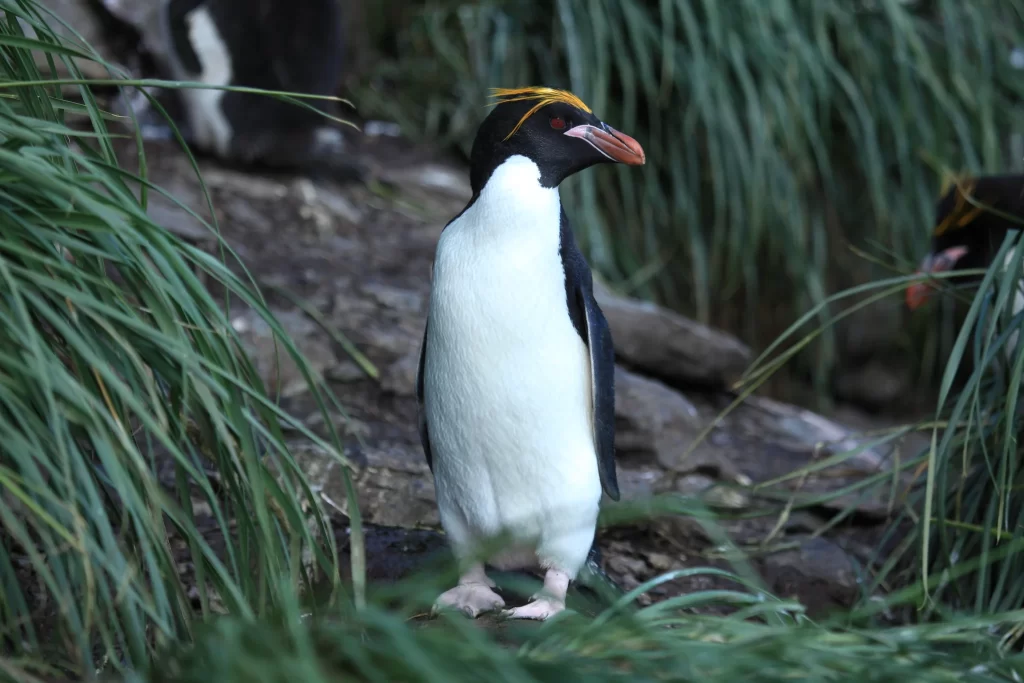
Image attribution: “Macaroni Penguin amid Tussock Grass” by Liam Quinn is licensed under CC BY-SA 2.0
Macaroni Penguins are funny birds that are surely named because of the macaroni-colored feathers atop their heads, right? Unfortunately, this is not the case, as these birds are instead named for the resemblance of their plumes to macaroni hairstyles that some sported in Great Britain in the 1700s.
Macaroni Penguins are the most abundant penguin in the world, with around 20 million comprising the present population. However, they are listed as vulnerable, as their numbers have declined substantially in the last few centuries. Macaroni Penguins lay their eggs on remote islands in the southern oceans of the world.
Morepork
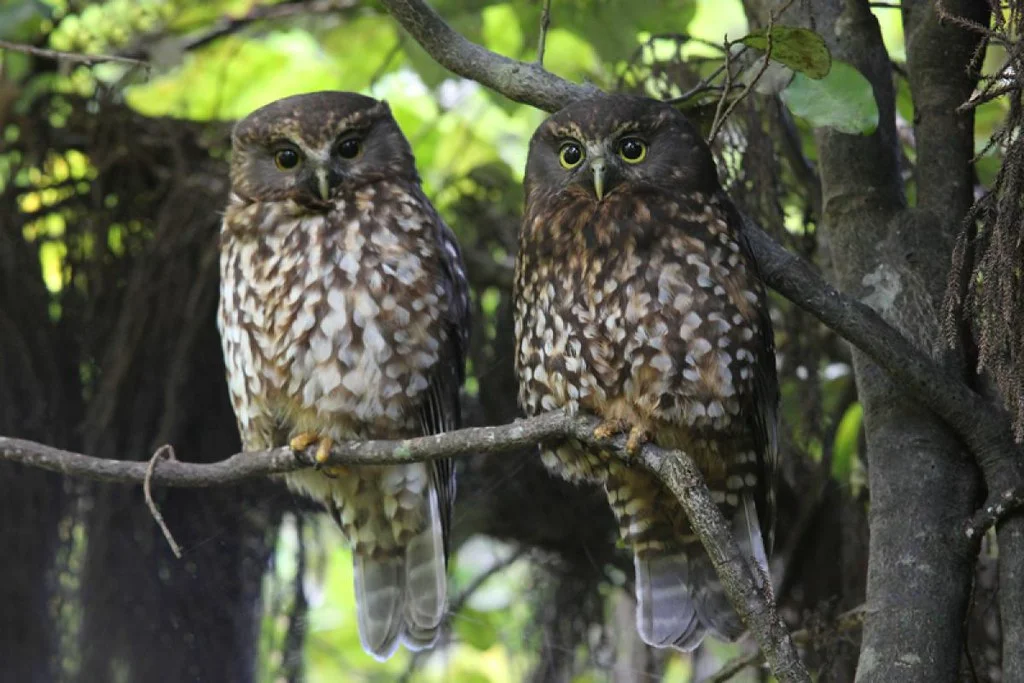
Image attribution: “Morepork.” by Eric Koester is licensed under CC BY 2.0
The Morepork is another of the weird bird names featured on this list. Disappointingly, they do not have a habit of feasting on pigs. Instead, they are named for their two-syllable call, which sounds to some like they are saying “more pork”.
New Zealand is the only location where these owls can be found. Here, they are the only native owl on the island. Like most owls, Morepork rarely come out during the day, instead being active under the darkness of night.
New Zealand King Shag
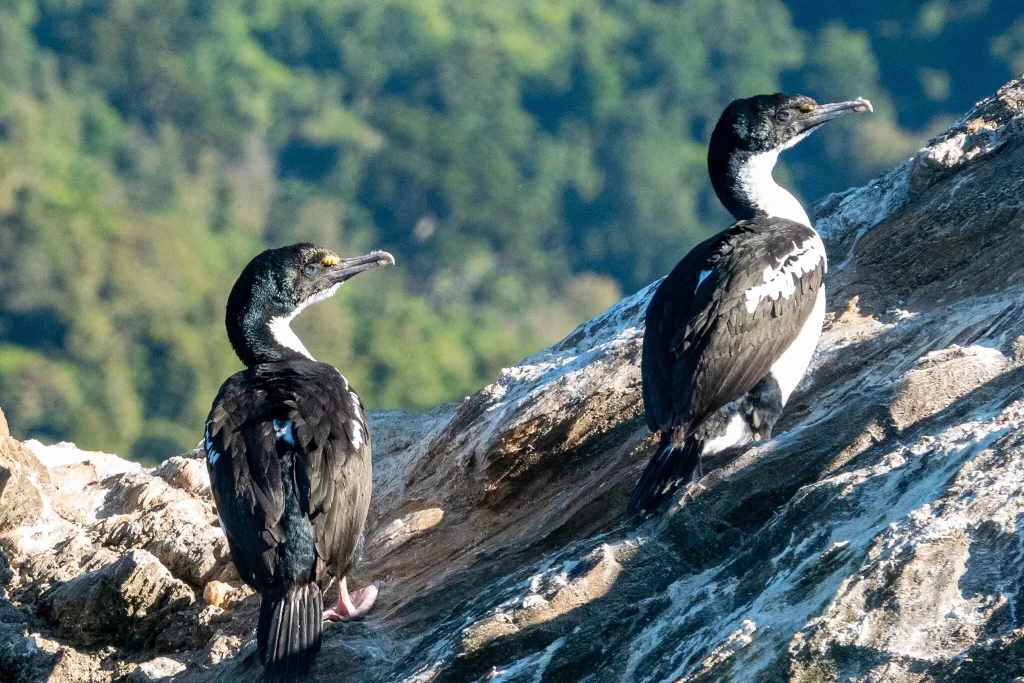
Image attribution: “New Zealand King Shag | Boat to Blumine Island | SI | NZ|2019-11-15|08-12-39” by Bettina Arrigoni is licensed under CC BY 2.0
The New Zealand King Shag certainly has one of the best funny bird names in the avian kingdom, and its nickname—the Rough-faced Shag–is even better. These cormorants have stunning blue eyes, but they are otherwise white underneath and dark above.
New Zealand King Shags have a very restricted range, being found only in the Cook Strait of New Zealand. They are quite rare, with only about 700 birds in existence. Indeed, birders should take care to ensure that they separate New Zealand King Shags from birds similar to cormorants that may be found in the surrounding ocean waters.
Smew
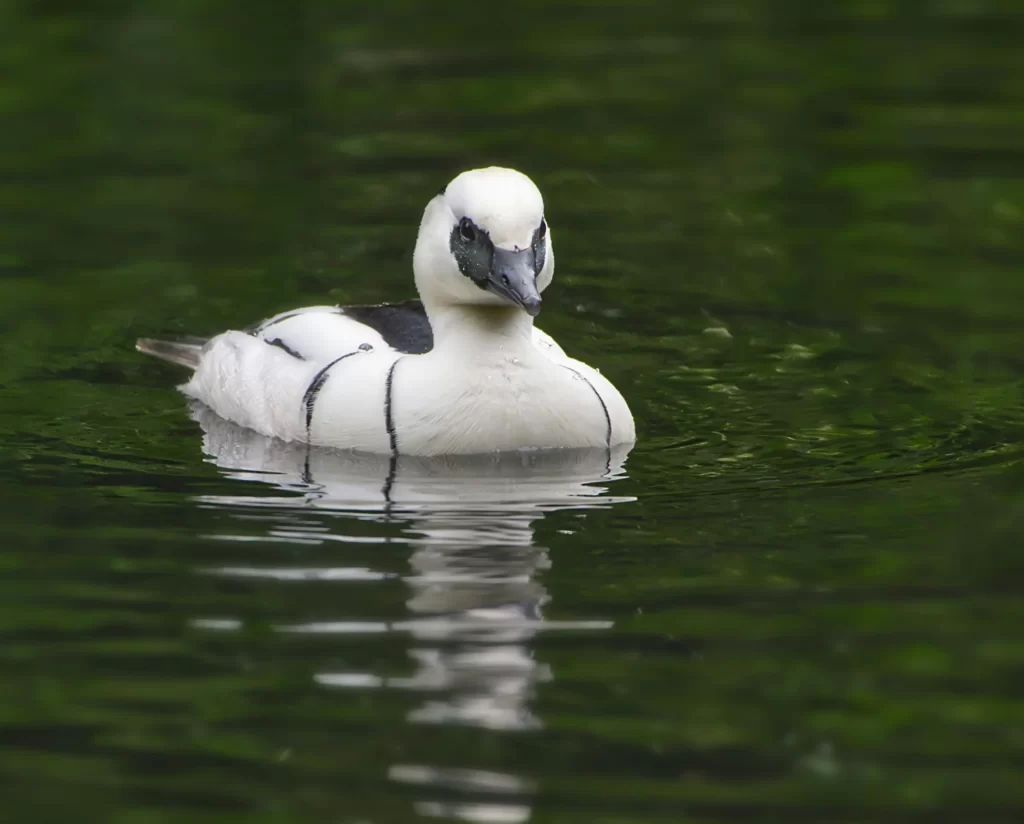
The word Smew sounds like a derogatory term that would be uttered at someone during an argument, but in fact, it is the name of this unique species of duck. Although the name has been used for centuries, the origins of the name are not clear, but it is likely derived from some language within the Germanic diaspora.
Smews breed in tree cavities or nest boxes supplied by humans. They breed in small numbers in the Nordic nations, but the bulk of the population breeds in Russia.
Squatter Pigeon
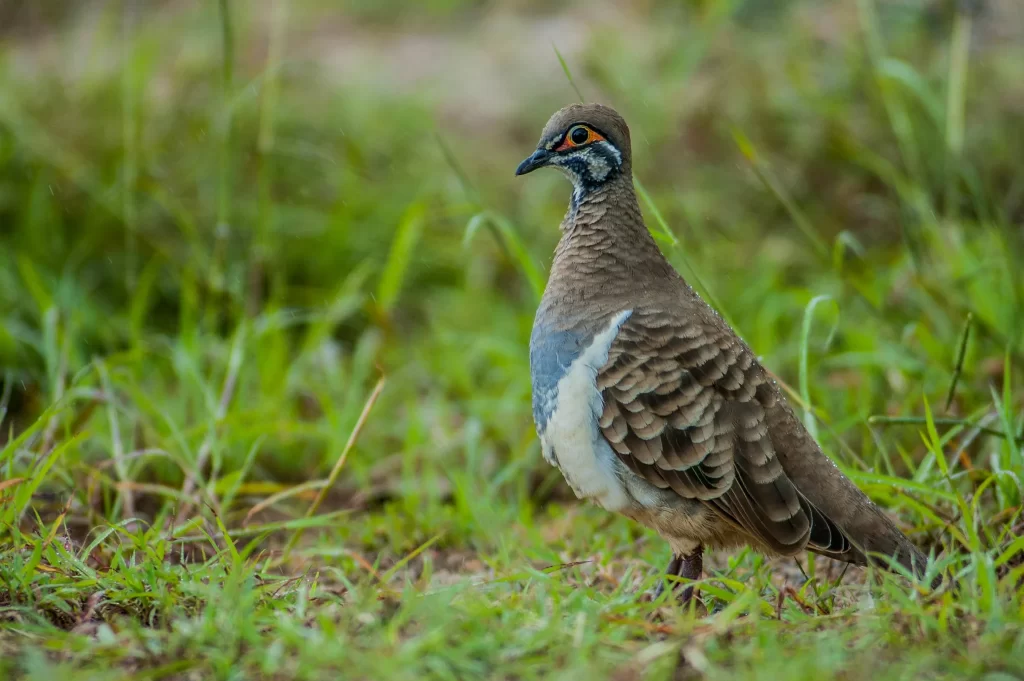
Image attribution: “Squatter Pigeon …Australia” by peterichman is licensed under CC BY 2.0
Squatter Pigeons are handsome doves of northeastern Australia. The exact reason for their name is not certain, and unlike most doves, relatively little is known about Squatter Pigeons.
Open eucalyptus woodlands seem to be the best locations to find these birds with funny names. Here, they eat some insects, but most of their diet is centered around seeds. Squatter Pigeons have declined substantially in the last half-century. It is thought that grazing from domesticated animals and perhaps hunting have contributed to their decline.
Tufted Titmouse
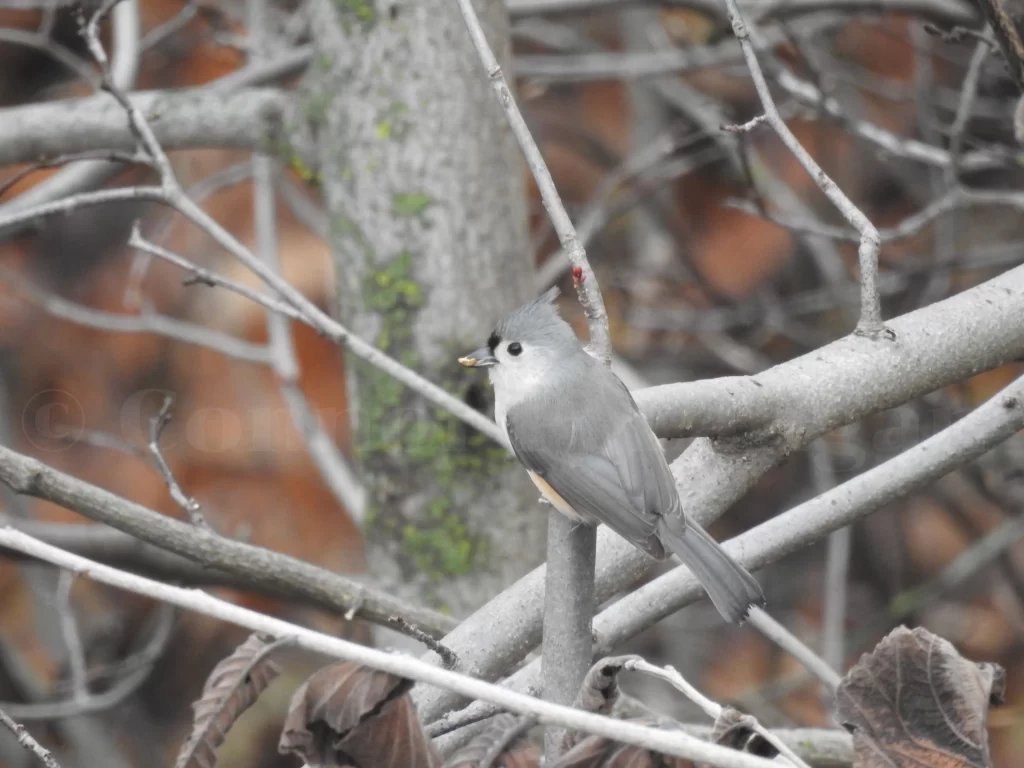
The Tufted Titmouse is a familiar bird with a mohawk native to the Eastern United States. They are primarily gray save for their rusty flanks, and they have a sweet and repetitive song that is uttered throughout woodlands.
Those who put out bird feeders are surely familiar with these species, as they love to stop by and grab sunflower seeds or other goodies. Tufted Titmice may also nest in birdhouses.
Watercock
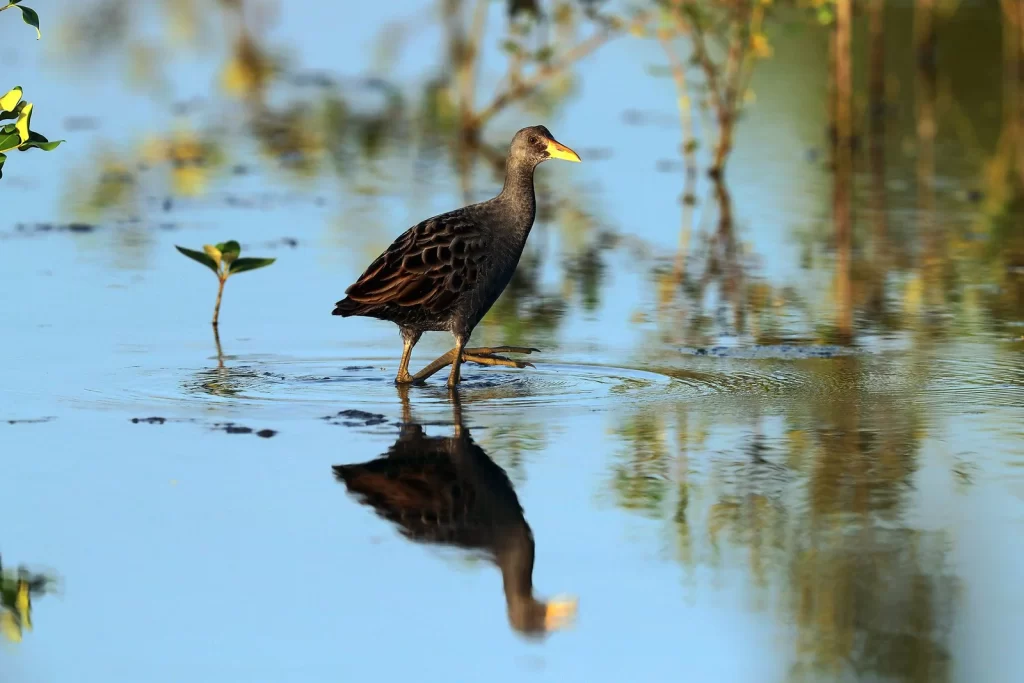
Watercocks are sexually dimorphic rails in which males have frontal shields that extend above their heads, while females have a subtle brown coloration. Although they’ve got funny bird names, the name is not inaccurate, as they thrive in marshes, rice paddies, and other locations with shallow water and vegetation in which they can hide.
Watercocks are migratory in the northern portions of their range in locations like Korea, China, Laos, and Nepal. However, they live year-round in places like India, Indonesia, and the Philippines.
Yellow-billed Oxpecker
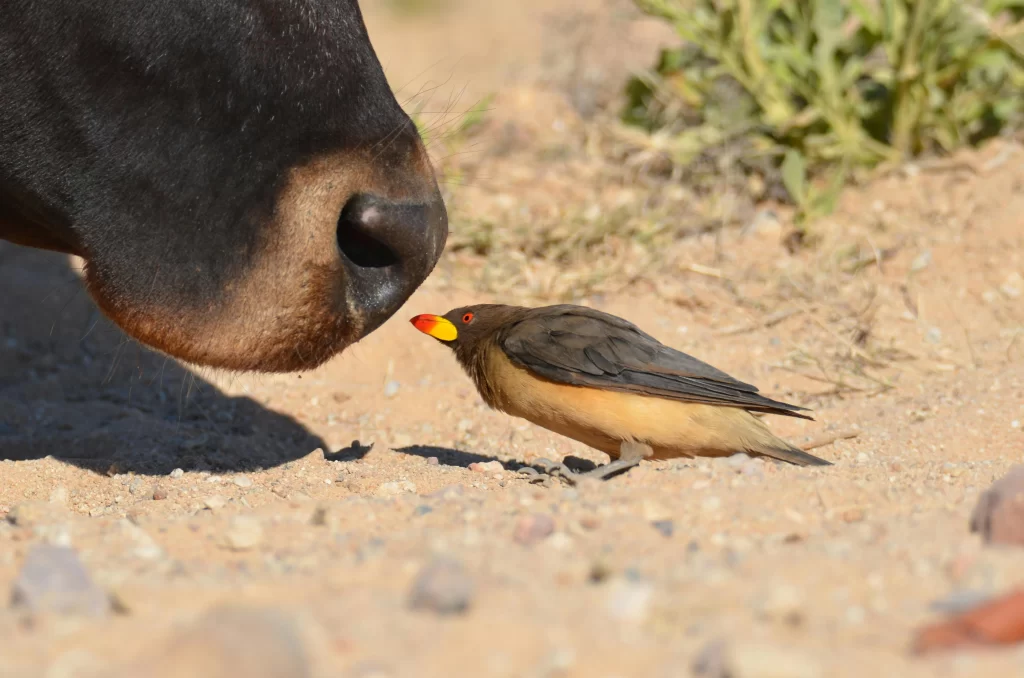
Yellow-billed Oxpeckers have a well-deserved spot on this list, as they’ve got a hilarious name. They are one of two oxpecker species, with both oxpeckers having funny bird names. Oxpeckers have evolved to forage on the large mammals that can be found in Africa. Indeed, Yellow-billed Oxpeckers not only forage on oxen, but they also forage on antelope, giraffes, zebras, water buffalo, wildebeest, and many other large mammals.
Yellow-billed Oxpeckers are native to the western and central portions of Sub-Saharan Africa. They forage in areas that consistently yield large mammals, and they breed in tree cavities. Interestingly, they have a cooperative breeding system in which helpers assist a pair with raising their young.
